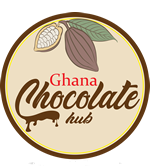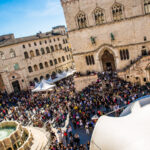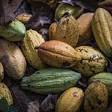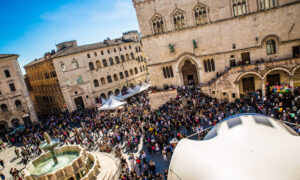HISTORY OF CHOCOLATE
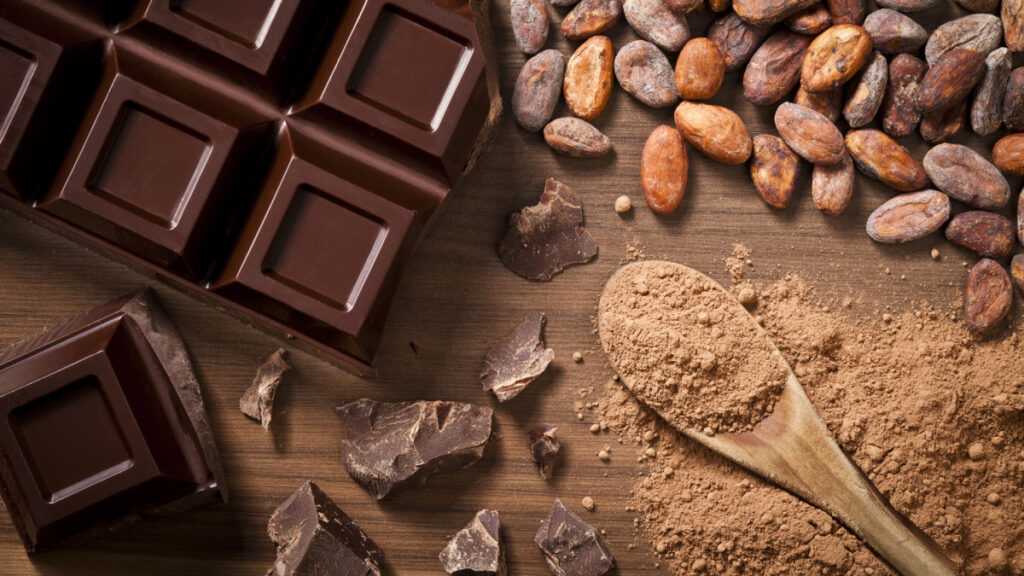
When most of us hear the word chocolate, we picture a bar, a box of bonbons, or a bunny. The verb that comes to mind is probably “eat,” not “drink,” and the most apt adjective would seem to be “sweet.” But for about 90 percent of chocolate’s long history, it was strictly a beverage, and sugar didn’t have anything to do with it.
The terminology can be a little confusing, but most experts these days use the term “cacao” to refer to the plant or its beans before processing, while the term “chocolate” refers to anything made from the beans, she explained. “Cocoa” generally refers to chocolate in a powdered form, although it can also be a British form of “cacao.”
Etymologists trace the origin of the word “chocolate” to the Aztec word “xocoatl,” which referred to a bitter drink brewed from cacao beans. The Latin name for the cacao tree, Theobroma cacao, means “food of the gods.
THE TRUE HISTORY OF CHOCOLATE
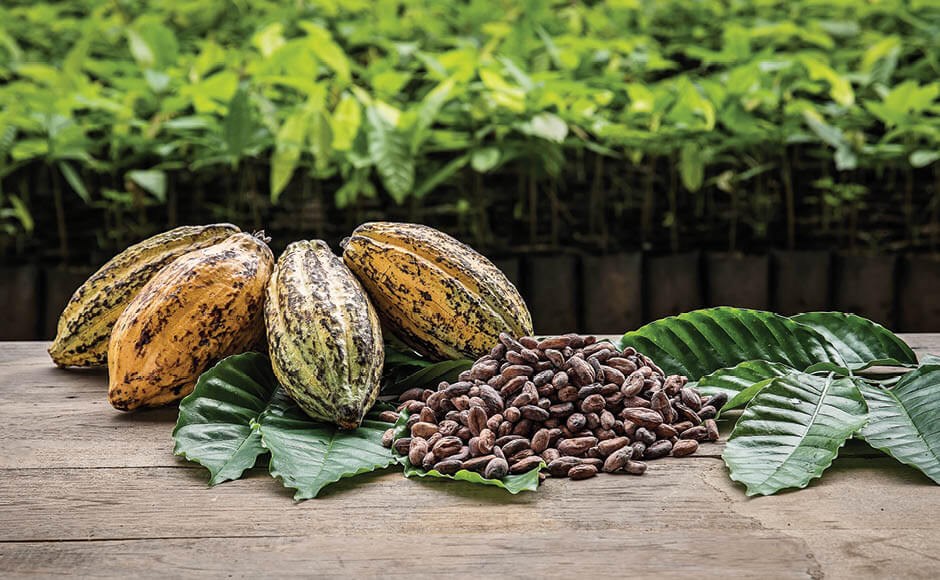
Chocolate’s history goes back at least 2,000 years, while historians Sophie and Michael Coe, authors of “The True History of Chocolate” (Thames and Hudson, 2013), suggest that it might go back four millennia.
The first known use of cacao is believed to have been discovered in southern Ecuador near Palanda at Santa Ana La Florida in the region of Zamora Chinchipe, where 5,500-year-old ceramic pots and a piece of a mortar were found to contain traces of theobromine, a marker for cacao. Shamans among the Shuar Indians are said to have used this equipment to prepare hallucinogenic potions. At the first chocolate factories, workers crushed cacao beans by using a heavy cylindrical stone called a “mano” to crush the beans on a grinding stone known as a “metate,” equipment featured in the exhibit. A fire would be going underneath to soften the cacao to form a paste that, after being left to dry, was grated or diluted in water to make hot chocolate.
In several pre-Columbian Latin American societies, cacao beans were used as currency, according to Smithsonian magazine. Mayans and Aztecs believed the beans had mystical properties and used them during important rituals. When the Spanish arrived, sweetened chocolate came into existence. Legend has it that the Aztec king Montezuma gave conquistador Hernán Cortés a bitter chocolate drink, which he said was disgusting. But Cortés’ men added cane sugar and honey to it and took it back to Spain, where it quickly became popular.
Chocolate was a fashionable drink for rich Europeans throughout the 18th century. The Industrial Revolution allowed chocolate to be mass-produced and brought the treat to the masses. The popularity led to the development of cacao tree plantations.
MASS MANUFACTURING
The first mass-produced chocolate bar was created in 1847 in Bristol, England, by a chocolate company, Fry’s, when Joseph Fry added additional cocoa butter to Van Houten’s chocolate, which turned it into a moldable paste, according to Bristol Museums. Milk chocolate was invented soon after with the help of Henri Nestlé, who went on to found the major food company that bears his name. Major European chocolate brands Lindt and
Cadbury also got their start in the 1800s; Rodolphe Lindt invented the conching machine, which gives chocolate a velvety texture.
Mass chocolate consumption hit the United States in the late 1800s when Milton S. Hershey began selling chocolate-coated caramels. He then developed his own formula for milk chocolate, purchased chocolate factory equipment, and introduced mass-produced chocolate bars and other shapes, like Hershey’s Kisses, in 1900.
In 1923, the Mars Co. developed the Milky Way bar by putting nougat inside a chocolate bar. That same year, former Hershey employee H.B. Reese introduced Reese’s Peanut Butter Cups, which later became part of the Hershey brand As the years progressed, chocolate concoctions from both small and large producers became increasingly innovative. In September 2017, Swiss chocolate company Barry Callebaut introduced ruby chocolate. Ruby chocolate comes from isolating specific compounds in cocoa beans, according to Confectionary News. That, along with a modified
processing technique, results in rosy pink chocolate that has a sweet but sour berry taste and no traditional chocolate flavor, according to The Sydney Morning Herald. Other colored chocolates are made from dyed white chocolate.
THE COCOA FRUIT
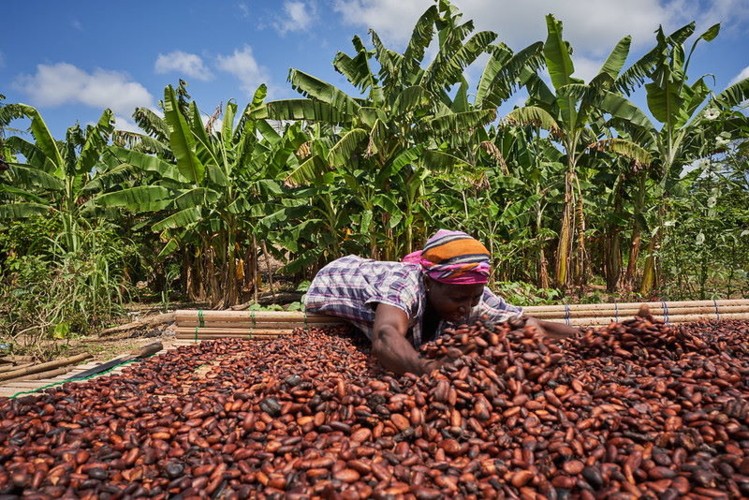
Chocolate is prepared from the fruit of the Theobroma cacao, a tropical tree whose name means “food of the gods” in Greek, according to “Chocolate: Food of the Gods,” an online exhibit by the Cornell University Library.
Theobroma cacao trees are native to the Amazon and Orinoco river basins in South America. The trees are widely distributed from southeastern Mexico to the Amazon River.
They thrive in hot, humid areas within about 20 degrees of the equator, according to Cornell. As the popularity of chocolate spread, growers established plantations in other regions, such as West Africa and South and Southeast Asia. Today, Ghana, Côte d’Ivoire, Nigeria, Indonesia and Brazil account for 79 percent of the world’s cacao production.
Cacao trees bear fruit that are about the same size and shape of a papaya, according to Patric Chocolate. These bumpy, lumpy berries, or pods, are full of up to 50 sour seeds, orbeans, covered in white pulp.
Cacao seeds are harvested by hand because machines could injure the trees, according to Cornell. Workers remove the pods, which are orange when they are ripe, and open them with a machete. The seeds are placed in large fermentation trays that are stacked and covered in banana leaves, where they are left for two to seven days. Fermentation produces
the chocolate flavor and aroma. It also destroys the seed’s embryo, preventing unwanted germination, and causes the white pulp to fall away from the seeds.
After fermenting, the beans dry out on sunny platforms. Workers turn them several times a day for three to five days to complete drying. The beans can dry faster in rotary driers but sun-dried beans taste the best, according to Cornell.
Next, the beans are taken to the chocolate factory, where they are cleaned and debris is removed. The beans are roasted in large, rotating ovens. The roasting draws out the flavor and removes the beans from their hulls. Roasted beans go into a winnowing machine, which cracks the beans and removes hulls. The remaining part of the bean is called the nib. Nibs become chocolate.
The nibs are ground down under a series of rollers. This process results in a thick paste called chocolate liquor. Chocolate liquor does not contain alcohol (however, chocolate liqueur does). It is the main source of unsweetened baking chocolate, according to Pam Williams, co-founder and past president of the Fine Chocolate Industry Association (FCIA) and founder and lead instructor of Ecole Cocolat Professional School of Chocolate Arts.
CHOCOLATE INDUSTRIAL REVOLUTION
When the Spanish Conquistadors arrived in the New World and began the process of invading, colonizing, and ultimately destroying the native cultures, they also discovered the value of the local cacao crop.
However, they brought their own innovation to the appropriated drink—the addition of sugar and spices to sweeten the bitter cocoa. After that point, chocolate became wildly popular amongst the Spanish, who kept the production method a secret from other Europeans for almost 100 years after their discovery.
The Spanish could not hold onto their secret forever, and chocolate quickly spread across the rest of Western Europe. Chocolate—then still exclusively in the form of a drink— appeared in France, and then England, in royal courts and special “chocolate houses” that served the social elite. Hot chocolate was hailed by the upper classes as both delicious and
healthy, and cocoa ultimately gained the reputation of being an aphrodisiac.
The exclusivity of chocolate was ultimately diminished by the onset of the Industrial Revolution, when steam-powered machines made the production of cocoa powder significantly quicker and more affordable. Solid chocolate hit the market and found wild success by 1850, due to the discovery by Joseph Fry that adding cacao butter to the cocoa powder formed a solid mass. Sixty years later, the art of creating chocolate confections with
flavored filling—referred to as pralines by their Belgian inventor, Jean Neuhaus II—went public. From there, the chocolate and cocoa industry exploded in popularity and quickly spread around the world.
Source: Smithsonianmagazine, Livescience, and Time
